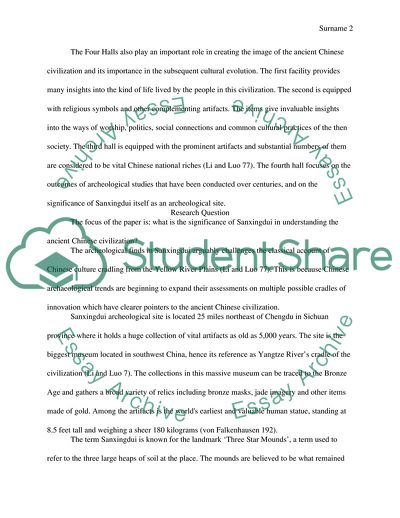Cite this document
(Defining the Archaeological Cultures at the Sanxingdui Site Report Example | Topics and Well Written Essays - 2000 words, n.d.)
Defining the Archaeological Cultures at the Sanxingdui Site Report Example | Topics and Well Written Essays - 2000 words. https://studentshare.org/history/1860185-the-hoard-of-sanxingdui
Defining the Archaeological Cultures at the Sanxingdui Site Report Example | Topics and Well Written Essays - 2000 words. https://studentshare.org/history/1860185-the-hoard-of-sanxingdui
(Defining the Archaeological Cultures at the Sanxingdui Site Report Example | Topics and Well Written Essays - 2000 Words)
Defining the Archaeological Cultures at the Sanxingdui Site Report Example | Topics and Well Written Essays - 2000 Words. https://studentshare.org/history/1860185-the-hoard-of-sanxingdui.
Defining the Archaeological Cultures at the Sanxingdui Site Report Example | Topics and Well Written Essays - 2000 Words. https://studentshare.org/history/1860185-the-hoard-of-sanxingdui.
“Defining the Archaeological Cultures at the Sanxingdui Site Report Example | Topics and Well Written Essays - 2000 Words”. https://studentshare.org/history/1860185-the-hoard-of-sanxingdui.


